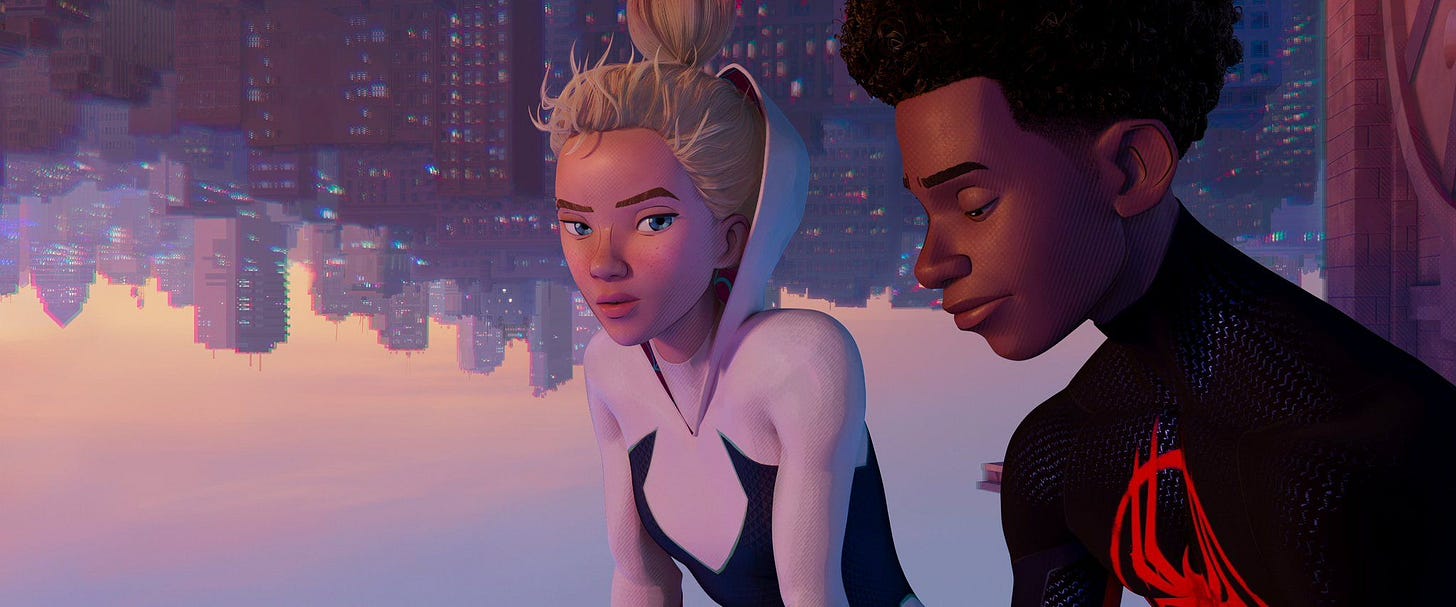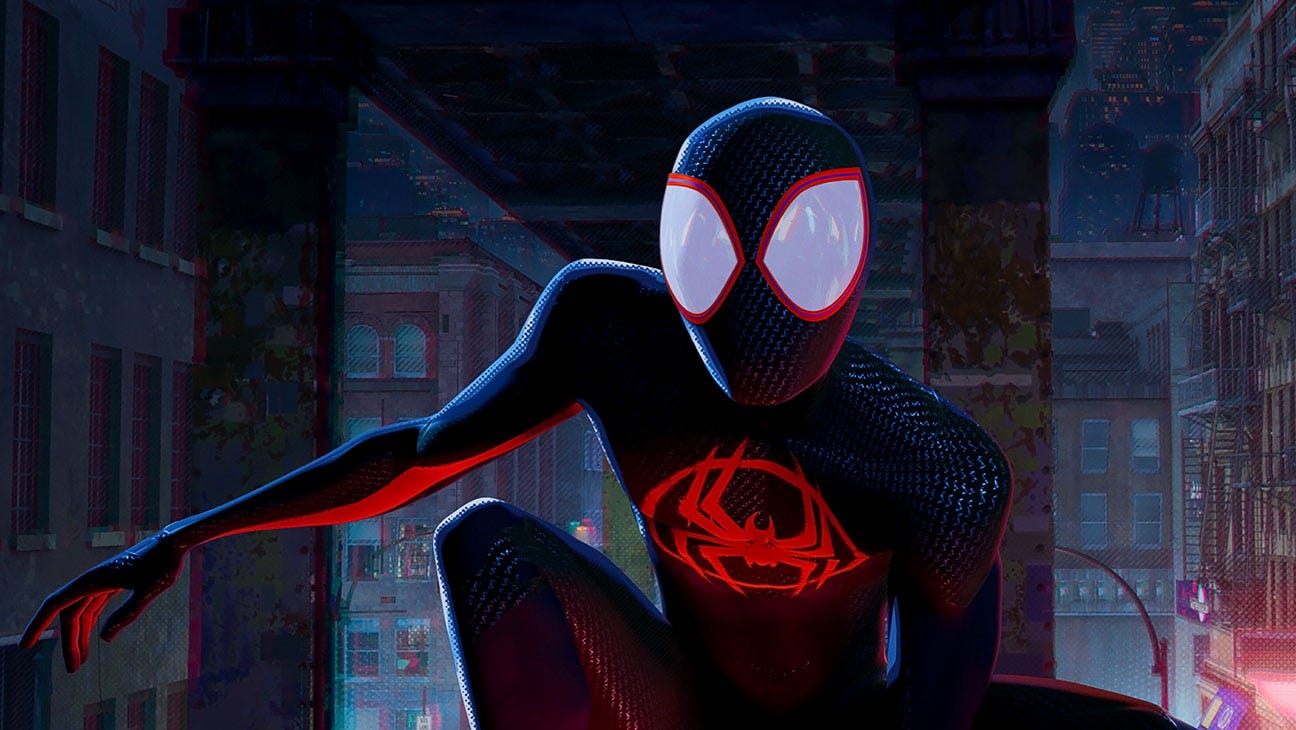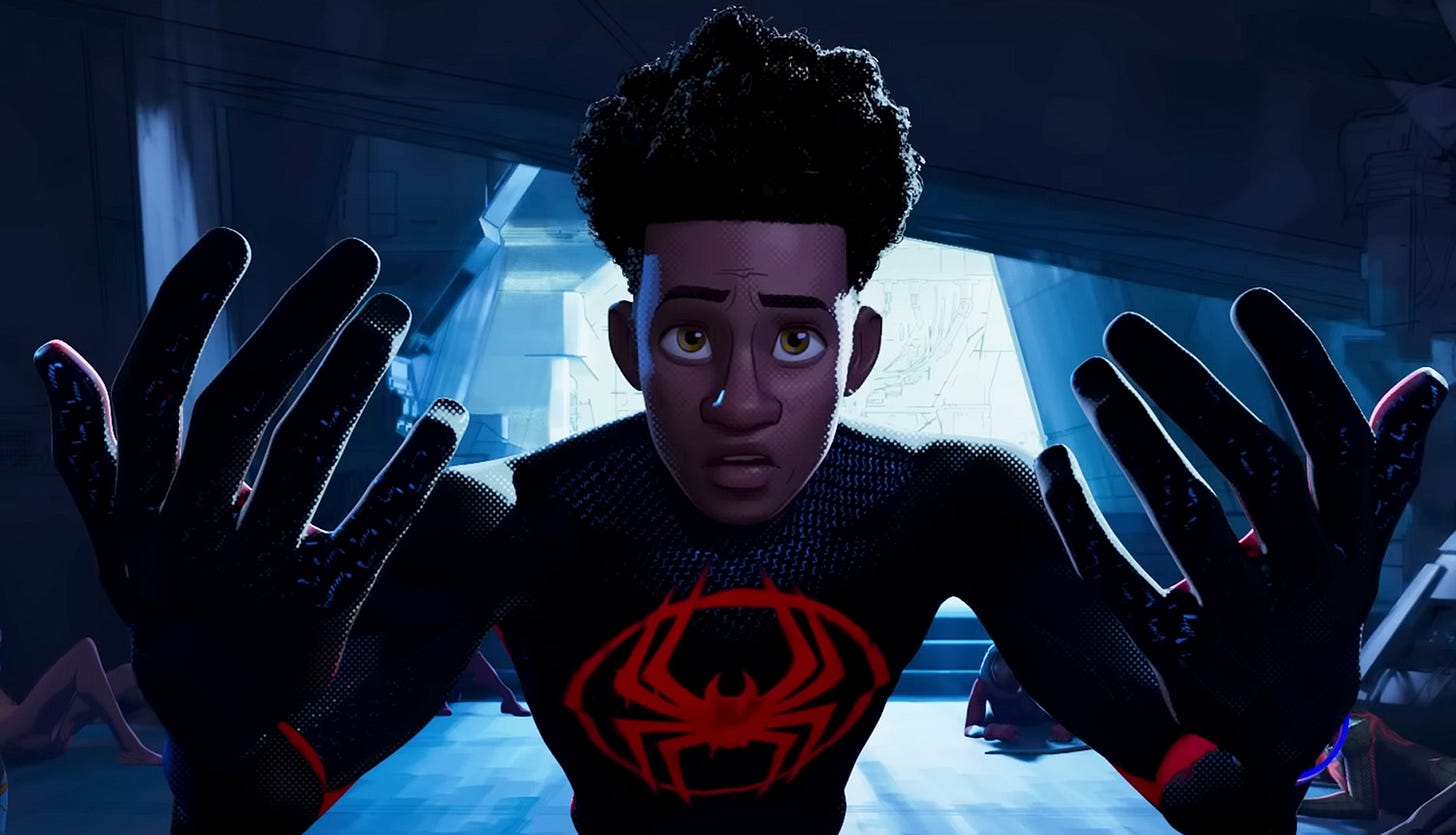Spider-Man: Across the Spider-Verse out-does itself
The acclaimed sequel proves that lightning can strike twice
Perhaps hindsight finds meaning where there is none, but change always seems to manifest at the moment of maximum stasis. Indeed, by the late 2010s, the superhero genre and the animation medium, both financial juggernauts and popular entities, had grown consistently stale, regularly predictable, and frequently mediocre - both were due for a shake-up. Enter Spider-Man: Into the Spider-Verse, a radically expressive film that uprooted expectations and challenged convention. Where its contemporaries were afraid to make waves, the 2018 film dove head-first into bold new animation styles while introducing general audiences to a biracial Spider-Man more reflective of current moment. Its impact on the industry is unquantifiable, with countless animated films adopting its blend of traditional two-dimensional principles with computer-generated three-dimensionality. Equally unquantifiable is the praise awarded to it by critics and fans, often citing the film as one of the best ever made - period. This consensus is near universal…but I’m an outlier. Look - I LIKE that original film, particularly for its inventive (if perhaps dizzying) visuals, but it’s never quite satisfied me on an emotional level, and I appreciate its element more than I enjoy watching the film itself. So after seeing the almost unprecedented acclaim for its sequel Spider-Man: Across the Spider-Verse, I was admittedly a bit skeptical. I was fairly confident that the film would be just as good as the first, but from my perspective, that wouldn’t result in an earth-shattering medium-defining success. But Joaquim Dos Santos, Kemp Powers, and Justin K. Thompson have directed a film that has defied my expectations, and while the hype is a bit overblown, I’m beginning to see what everyone else saw - lightning rarely strikes twice, but this sequel is poised to also revolutionize the industry as its predecessor so effortlessly did five years ago.
One of the original film’s key innovations that is often overlooked is its use of the multiverse as a crucial narrative device; alternate realities had been present in comics for decades by this point, but story arcs focusing on multiversal shenanigans were notoriously convoluted affairs that pigeonholed future writers, forcing them to either adhere to dense lore religiously or abandon continuity altogether, exacerbating the problem further. But after nearly two decades of superhero films (to the point of saturation), general audiences were ready to take that step, for better or for worse. Since then, the multiverse is almost a requirement for creatively bankrupt franchises, leaning into alternate versions of characters to avoid taking creative risks with its current ones. Now returning to the trend that it established, this franchise takes the next obvious step - making the multiverse matter. To be sure, the original film’s plot hinges on various Spider…people being thrust into Miles’ universe, threatening the fabric of reality itself, but neither that original film nor subsequent multiverse movies (save for Everything Everywhere All at Once) ever used the concept in thematically interesting ways. By contrast, this film is built around the interpersonal ramifications of a multiverse, narrowly focused on Spider-Man and his infinite variations. Furthermore, it’s used to great metatextual effect, forcing the audience to wrestle with legacy, canon, and what makes a character authentically Spider-Man.
The film reinforces its multiverse by implementing wildly different art styles, as its predecessor did, giving the film’s stylistic diversity a strong narrative explanation. But the original film only featured about a half-dozen Spider-Man variations, half of which were animated in a relatively similar way - this film, by comparison, introduces hundreds of incarnations of the iconic web-slinger, many featuring their own unique visual language. In theory, seeing all of these characters side-by-side should be disorienting or distracting, but the film is able to pull this off rather seamlessly (with the exception of some obvious live-action examples). To that end, the animation is absolutely stunning, though it can sometimes get in its own way due to frenetic sequences that DO disorient and distract. The film is most successful when it pulls back and lets itself breathe. The extended opening-sequence focusing exclusively on Hailee Steinfeld’s Gwen Stacy manifests as shifting watercolor, bravely expressionistic and boldly abstract in ways that mainstream animation hasn’t been since Fantasia. It’s these kinds of sequences that really take advantage of the medium, pushing beyond even what the original film was willing to attempt.
But while the direction is incredibly well-realized, the script is easily the weakest link - by default. Lord and Miller are phenomenal writers (and I’m not sure exactly what Dave Callaham contributed to the script), but dialogue exchanges can sometimes feel a tad undercooked and a bit overdone. You can see this issue play out with the film’s humor, which doesn’t always land and occasionally veers into lampshading - again, the film’s best moments are these welcome chances for introspection, so poorly-timed comic relief can feel deflating. But a common critique of this film, even among its most ardent supporters, has to do with its structure. While the film’s key story beats are all solid on paper, the film’s pacing makes for a fairly uneven narrative. The film has the issue many second films face of being both a sequel AND the first half of a two-part story. Subsequently, the inciting incident doesn’t occur for almost half of the story, and the bulk of those aforementioned key story beats are shoved into the last 45 minutes. But luckily, none of this material ends up feeling like filler, usually giving us new insights into these characters and their struggles. Furthermore, such character explorations may feel more relevant to the plot on a second-viewing, knowing where the story will go. The narrative culminates with a cliffhanger so dramatic that I pity those who went into this movie unaware of this film’s “part-one” status.
I’m always concerned that any preconceived notions or pre-existing expectations of mine will color my experience of a film - but then I see films like Spider-Man: Across the Spider-Verse that remind me that no mental state or mood of mine can blind me to greatness. To be sure, the hype surrounding this film is comically overblown (should this REALLY be the highest-rated film on Letterboxd ever?), but Sony Pictures Animation has once again revolutionized mainstream animation and the superhero genre, making the first film seem almost quaint by comparison. Spider-Man has always been a singular force in the realm of superheroes - across all of his iterations, what has helped the character endure for over sixty years is his underdog status, his unbridled optimism, and his authentic human struggles. Miles Morales takes that framework and represents it for a new generation, and his two on-screen appearances represent a new direction for American animation. I may have been a skeptic before, but I’ll be first in line to see his story play out in nine months - and not soon enough.








